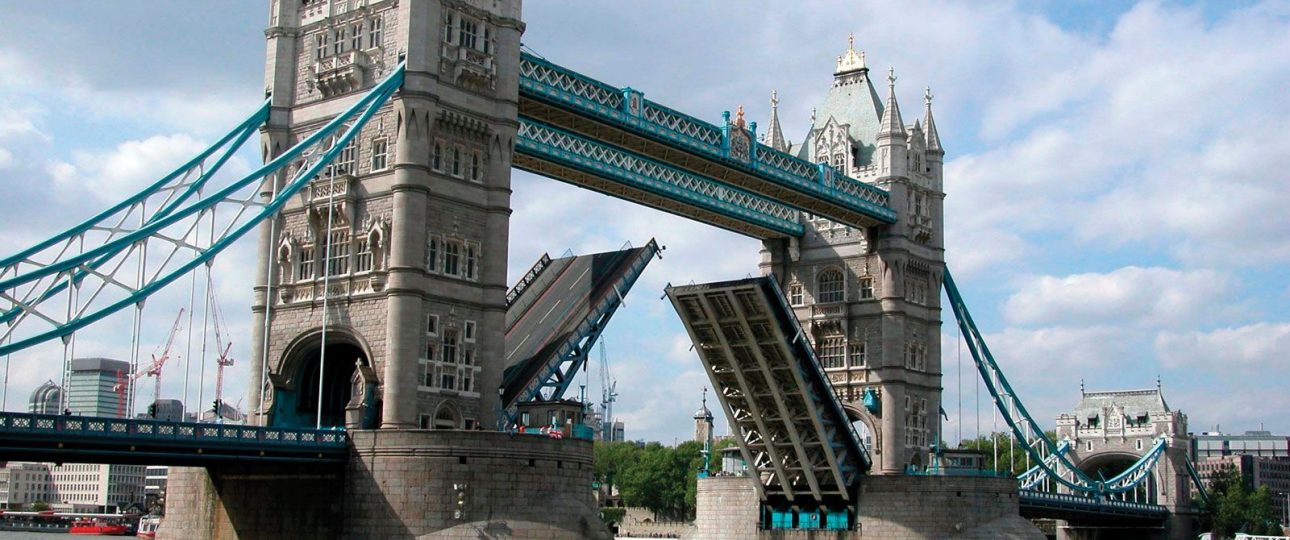Introduction to Tower Bridge
Tower Bridge stands as one of London’s most recognizable landmarks, embodying the city’s rich history and architectural prowess. This impressive structure spans the River Thames, linking the boroughs of Tower Hamlets and Southwark. Often mistaken for London Bridge, Tower Bridge is a masterpiece of Victorian engineering and a vital part of London’s cityscape. It attracts millions of visitors annually, eager to delve into its storied past and enjoy its panoramic views.
Historical Significance
Constructed between 1886 and 1894, Tower Bridge was designed to alleviate road congestion while permitting ships to access the Pool of London. The bridge is a testament to the vision of architect Sir Horace Jones and civil engineer Sir John Wolfe Barry, with assistance from Henry Marc Brunel. It uniquely combines bascules—movable sections of the roadway—with a suspension bridge, showcasing the ingenuity of Victorian engineering.
The bridge has been a silent witness to numerous historical events, although it was not present during the Great Fire of London in 1666. It did, however, endure the London Blitz during World War II and has been a backdrop for countless royal celebrations and processions.
Architecture and Design
Tower Bridge is not only functional but also an architectural marvel. Its Gothic-style towers rise 65 meters above the river, constructed from blue and white painted steel with intricate stonework. Visitors can enjoy breathtaking views from the glass-floored walkway, offering a unique perspective of the river below and the bustling city above.
Key architectural features include:
- Two bascules that can be raised to allow ships to pass
- Victorian Gothic style that harmonizes with the nearby Tower of London
- Glass-floored walkway for a distinctive viewing experience
The Experience of Visiting Tower Bridge
Best Time to Visit
The ideal time to visit Tower Bridge is during the spring and summer months (April to September), when the weather is generally mild and pleasant. This period is perfect for leisurely walks along the Thames, though visitors should anticipate larger crowds, especially on weekends and holidays.
How to Get There
Thanks to its central location, reaching Tower Bridge is straightforward. Here are some convenient transport options:
- Tube: The nearest underground stations are London Bridge (Jubilee and Northern lines) and Tower Hill (Circle and District lines).
- Bus: Several bus routes serve the area, including numbers 15, 42, and 78.
- Walking: Tower Bridge is easily accessible by foot from nearby attractions like the Tower of London and Borough Market.
Local Transportation
Once at Tower Bridge, navigating London’s local transportation is simple:
- The Tube: A highly efficient way to travel across the city, with frequent and timely trains.
- Buses: London’s iconic red buses offer a scenic way to explore the city.
- Bicycles: Rent a bike via the Santander Cycles scheme for an eco-friendly way to explore.
Things to Do at Tower Bridge
Visit the Tower Bridge Exhibition
The Tower Bridge Exhibition provides an opportunity to explore the bridge’s history and engineering. Visitors can engage with:
- Interactive displays detailing the bridge’s construction
- Historical artifacts related to the bridge
- Stunning views from the upper walkways
Take a Walk Across the Bridge
A visit to Tower Bridge is incomplete without a stroll across it. Enjoy sweeping views of the Thames, the Tower of London, and the city skyline. Capture the moment with photos, especially at sunset when the city lights begin to twinkle.
Explore Nearby Attractions
Enhance your visit by exploring nearby attractions:
- The Tower of London: A UNESCO World Heritage Site, renowned for its rich history and the Crown Jewels.
- Borough Market: A culinary haven with a variety of stalls offering gourmet foods, fresh produce, and street food.
- Shakespeare’s Globe: A reconstruction of the original Globe Theatre, offering plays and tours.
Practical Travel Tips
What to Bring
When visiting Tower Bridge, consider packing these essentials:
- Comfortable walking shoes: Expect to do a lot of walking.
- Camera: To capture the stunning views and memorable moments.
- Water bottle: Stay hydrated, especially during warmer months.
Accessibility
Tower Bridge is generally accessible for visitors with mobility issues. The exhibition includes lifts and ramps, ensuring everyone can enjoy the experience.
Summary of Key Facts
- Tower Bridge was constructed between 1886 and 1894.
- It features a unique combination of bascules and a suspension bridge.
- The best time to visit is from April to September.
- Accessible via London Bridge and Tower Hill tube stations.
- The Tower Bridge Exhibition provides insights into its history and engineering.
- Nearby attractions include the Tower of London, Borough Market, and Shakespeare’s Globe.
Conclusion
Tower Bridge is more than just a crossing over the Thames; it is a symbol of London’s history, culture, and innovation. From its striking architecture to the engaging exhibition, Tower Bridge offers a rich experience for all visitors. Whether you’re interested in history, architecture, or simply enjoying the views, Tower Bridge is a captivating destination in London.




